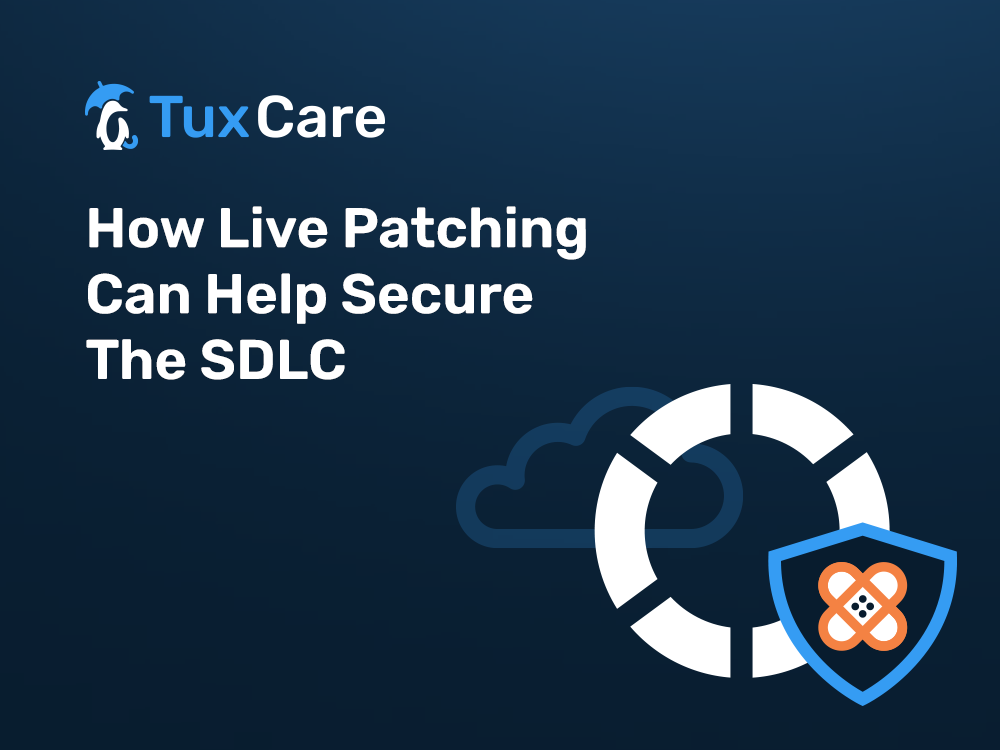How Live Patching Can Help Secure The SDLC
Agile methodologies, cloud computing, and automation tools allow software development teams to work faster and more efficiently. They emphasize fast iteration and continuous delivery, enabling teams to deliver software faster. DevOps, in turn, encourages collaboration between development and operations teams to drive speed and efficiency.
But what happens to security when development moves rapidly? Does development speed mean a reduced emphasis on security?
After all, it’s hard to integrate security considerations into each rapid sprint every single time… which can lead to security vulnerabilities in the final product.
Likewise, DevOps emphasizes automation and continuous delivery, which can mean a lack of formal security testing. With the increased speed and efficiency of the Software Development Life Cycle (SDLC), security vulnerabilities may go undetected until the product is deployed.
Security Pressures in the DevOps, CI/CD Process
In the race to spin up an OS instance to crack on with a project, development teams can easily skip over simple security steps. Is the OS patched against the latest security vulnerabilities – and if not, what opportunities does that give to hackers?
Do DevOps teams have the resources to patch while also rushing to meet deadlines? Probably not, and that makes the DevOps process vulnerable. And it’s not just about the OS. The SDLC presents several security challenges at different stages:
- Requirements gathering and analysis: A lack of security expertise in development can lead to incomplete or unclear security regimes that are not properly defined, leading to missed vulnerabilities and potential security risks. This is mirrored by insufficient threat modeling or risk assessment: resulting in security weaknesses that could have been prevented.
- Implementation and coding: SQL injection, cross-site scripting, and buffer overflows can be caused by poor coding practices – which won’t be caught when there is a lack of code review, testing, and validation to check for things like hard-coded passwords and weak encryption algorithms.
- Deployment and operation: Misconfigured systems can result in vulnerabilities, while inadequate monitoring, logging, and responses to security incidents can mean security incidents go unnoticed.
- Relying on insecure tools and resources: Outdated dependencies and libraries as well as the use of vulnerable open-source tools and resources can put the entire DevOps process at risk, including when there is a lack of proper validation and verification of third-party tools and resources.
Clearly, there are security pitfalls every step of the way, and the quicker developers move along the agile development path line, the greater the risk that the process will trip up on some big security risk.
In principle, security needs to be built into the entire development process (a framework known as SecDevOps). It’s a cultural shift that third-party consultants and tools can’t fix, but nonetheless, the right tools in key places can make a huge difference.
Automated Live Patching within the SDLC
While developers constantly create new virtual machines (VMs) for code testing, building, and release, they may not always be aware of the potential for these machines to be targeted by malicious actors, even if only temporarily.
A compromised development system can serve as a stepping stone for unauthorized access to internal resources. The risk quickly accelerates due to the automation involved, including management through scripting, and leveraging one of several available tools such as Ansible or Puppet
But what if developers could integrate security updates right into the DevOps process – and right into the tools that they love to use? That’s where TuxCare’s range of KernelCare automated patching services comes in to help protect virtual machines.
KernelCare from TuxCare rapidly and seamlessly applies security patches to the development environment. As soon as a VM goes live, KernelCare will apply live patches to the kernel and shared libraries without needing to restart any systems – so teams can keep up to date with the latest patches without needing to schedule downtime or a maintenance operation.
Any snapshots taken of your virtual machines will also be patched when activated, eliminating the risk of outdated vulnerabilities inviting cyber-attacks into your systems.
Greatly Reduce Security Risks in a Few Simple Steps
Installing TuxCare’s KernelCare is a hassle-free process that can be streamlined through automation and integrated into the setup scripts of virtual machines. KernelCare can help you secure one of the most easily neglected aspects of the development process – and it does so in the background.
With one single tool, DevOps teams can take a great leap in security: driving rapid progress throughout the SDLC while safeguarding the development process against malevolent actors.



 Documentation
Documentation Login
Login



